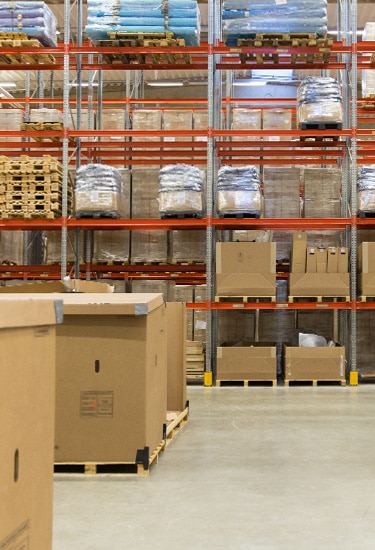The rates for dry van freight fluctuates heavily throughout the year. So, what causes the changes in price? Can you plan around these fluctuations to save money? Knowing the dry van shipping market and how it works is a vital skill to have when you work in shipping. Planning around the known fluctuations in the market can result in massive savings and a more reliable shipping service. There are many factors that affect full truckload shipping rates and in this blog post, we will cover the main four.
Location, Location, Location
Dry van freight rates are impacted heavily on the pick-up location and delivery location. The path from the pick-up to the delivery is called the lane and different lanes will go for different rates. Even if two lanes are the same distance, it’s possible or them to go for different amounts. These price differences can occur for several reasons.
One reason would be when there’s a lot of freight coming out of a certain place. For this example let’s look at Florida. When a lot of freight needs to be moved out of Florida, then all lanes going into Florida are going to be cheaper. This is because once the drivers make their delivery they know there is going to be more work nearby. When you boil it down, dry van freight rates are driven heavily by where truck drivers want to be.
An additional factor that plays into location is the amount of deadhead the driver will have to travel. Deadheading is when a driver has to drive with no trailer attached to their truck. This can be impactful if your pick-up or drop-off location are in the middle of nowhere. If this is the case, then the driver will be losing money just to get to the location. And if the driver is losing money then so is everyone else.
Current Supply and Demand
Supply and demand affect the price of everything and the rates for full truckload shipping is no exception. The biggest driver of demand in transportation is produce season, which starts in spring and goes until early summer. During this time, food shippers need for trucks increases massively. So, if you are not in the produce market then it is highly beneficial to plan around this season. This can be done by establishing a contracted rate for all your full truckload shipping. Additionally, you can plan around the season. However, planning around the season can be difficult. It is important to partner with someone that has experience in the market ahead of time.
The supply element in the transportation industry is the trucks available, or capacity. The fewer drivers available the more that they are able to charge the shipper. These shortages may be temporary and fix themselves over time or could be a larger scale. The best way to counter a change in rates due to capacity is to, once again, establish a contracted rate with your shipping partner. For larger-scale shifts, however, there is not a whole lot to be done. In those cases, however, everyone is paying more for shipping.
The Freight Being Shipped
The freight itself will also effect the dry van rates when shipping with the biggest factor being the weight of the freight. This is simply due to the fact that the heavier something is, the more gas it is going to use to ship it and therefore the more it is going to cost. The density of the freight also effects the rate. In short, you want to compact your packaging as much as possible because a smaller and denser package will take up less space and has a lower risk of causing damage. This all plays an even bigger role if you are shipping multiple truckloads or shipping often: the more you can condense your freight the less trucks you need to transport it.

Unique Events
The fourth factor and final factor that can impact the rate of dry van freight is some kind of unique event, such as a natural disaster. These events can cause the closing of warehouses, factories, or even roads. Unfortunately, you cannot really plan around these rare situations. During these times, it may not even be possible to get a truck to the pickup or destination.
We know there are multiple factors that can change dry van freight rates, but most of them can be prearranged and planned out. This strategy requires experience, the right tools, and flexibility. Luckily, as a shipper, you can gain all of these by partnering with the right shipping provider. If you want to see what Becker Logistics can do to improve your shipping then you can request a quote or contact us directly.
